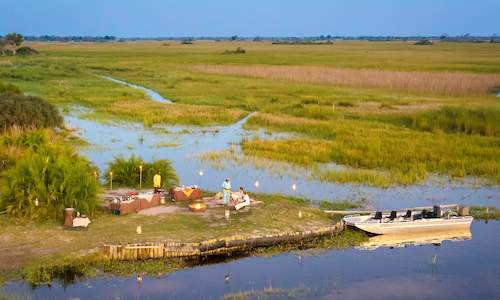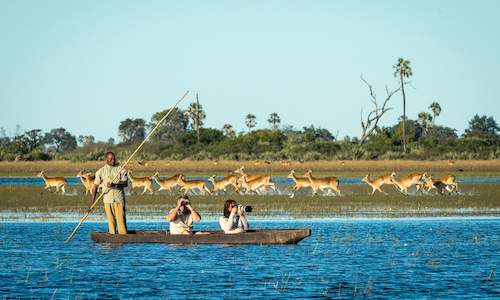Tsetse Fly
Pest or Protector
Visitors to the beautiful Okavango Delta in Botswana today can attribute their wonder and amazement to the Tsetse Fly, a creature that has mostly been cursed by travellers for its painful bite.The Okavango Delta is a place of beauty and incredible diversity where visitors can enjoy some of the continents finest game viewing and the spectacular scenery, but it could have been so different had certain events not taken their course.
Botswana is renowned for its beef production and cattle play an important part in Motswana culture, ensuring farmers have powerful political clout. With cattle farming requiring large tracts of land and grazing the Okavango Delta has long been looked with relish by beef farmers.
Historically, what has kept the cattle out of the Okavango area is the Tsetse Fly, a small reddish house-fly-looking insect that carries a deadly disease in humans and cattle. Sleeping sickness, or Nagana as it is known in cattle, is still a scourge in Africa and in the 1960's it was prevalent in the Okavango Delta to such an extent farmers kept their cattle away.
Eradicating the Tsetse Fly
It was decided by the authorities to undertake a project to eradicate the Tsetse Fly and in so doing eradicate Sleeping Sickness from Botswana. Many methods were tested to eradicate the tsetse fly, including shooting all hoofed animals the fly preyed on, chopping out all acacia thickets where the fly bred and even aerial spraying with the toxin DDT. None of these methods proved successful however and the Tsetse Fly thrived, keeping the cattle farmers away from the inner reaches of the Okavango.
Around the same time the authorities were trying to eradicate the Tsetse Fly they were also in the process of erecting fences to keep wildlife coming into contact with cattle in order to prevent the spread of disease. This control was a stipulation of the European Community as part of the contract in buying Botswana beef, the country's main export at the time.
The Veterinary Fences were, and still are today, the subject of much debate in that they have stopped wild animal migrations across Botswana but had the Okavango fence not been erected there is a strong likelihood that much of the Delta would have been cattle grazing land today and tourists would have had limited wildlife reserve to visit.
Tsetse Fly under control
A new passive and environmentally friendly Tsetse Fly control method was put into place whereby the flies are attracted to a baited cloth that blows in the wind and resembles a moving animal. The cloth is soaked in poison which kills the flies upon contact. This method has proved highly successful and the Tsetse Fly has all but been wiped out in Botswana.
Sleeping Sickness has not been recorded in Botswana for almost thirty years and although the fly has been eradicated it can still be looked on as the main protector of the Okavango Delta. Without the Tsetse Fly the wilderness of Botswana would be a little less intriguing.

These quality Okavango Delta Safari Lodges in Botswana are located in the Okavango and its private concession areas....
more
These Okavango Delta Safari Tours in Botswana highlight the best wildlife viewing and attractions including game drives and mokoro (canoe) w...
more
